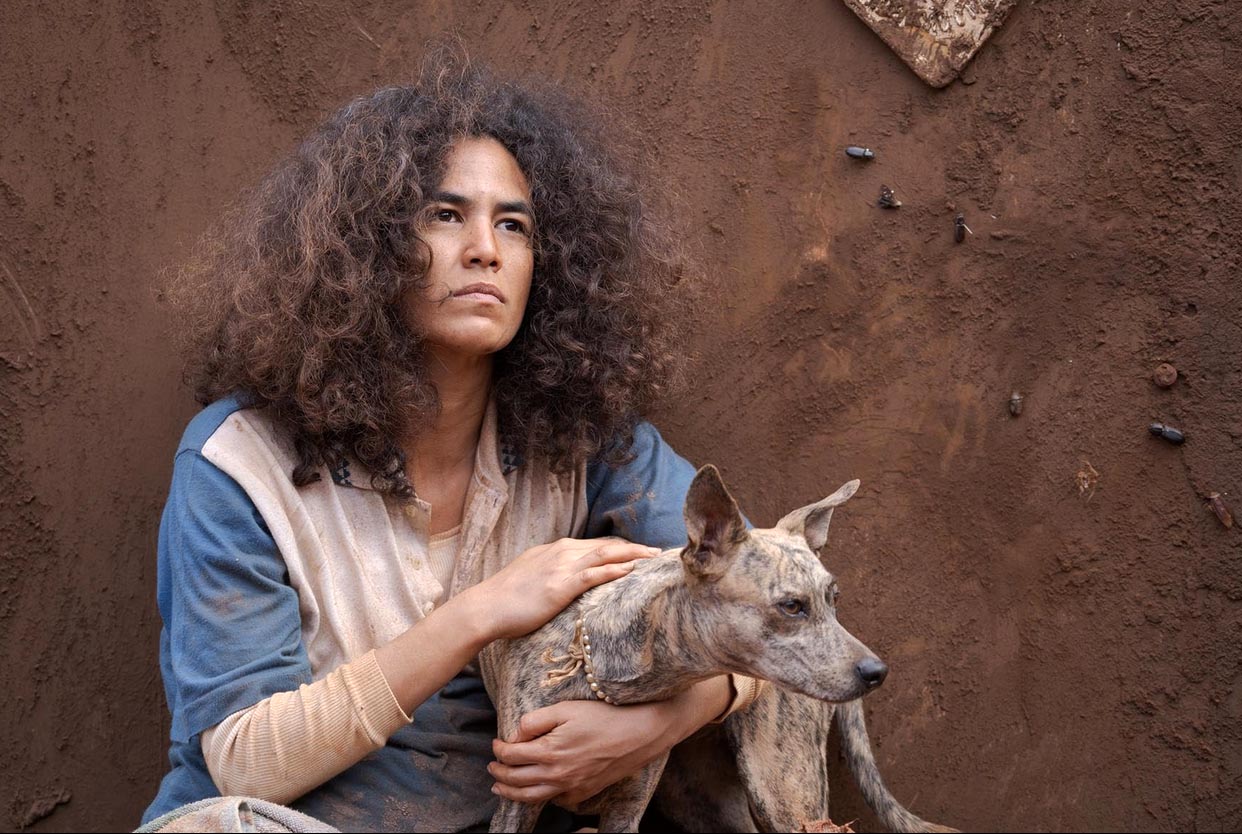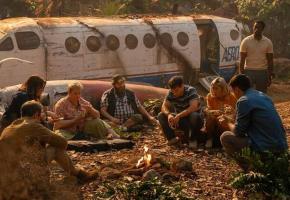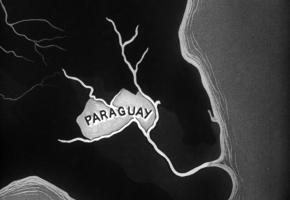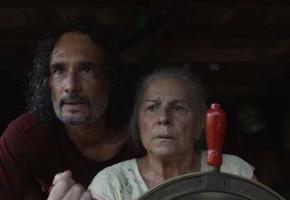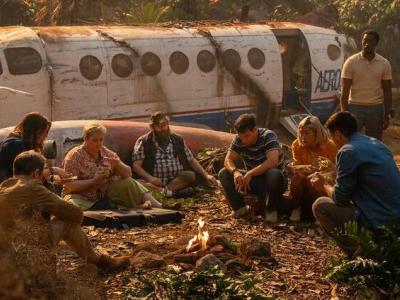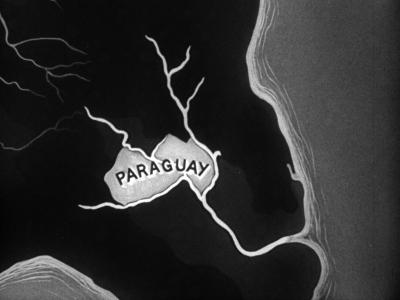People mill around the mining village as if in a daze as the local windmill screeches in the wind all through the night, while, all day long, the constant groans of the mining machinery that extract the ore compete with the cicadas. The ore is loaded onto trains that disappears into a long tunnel to unseen destinations. Few seem able to get away beyond that dark tunnel, those that do, seldom return.
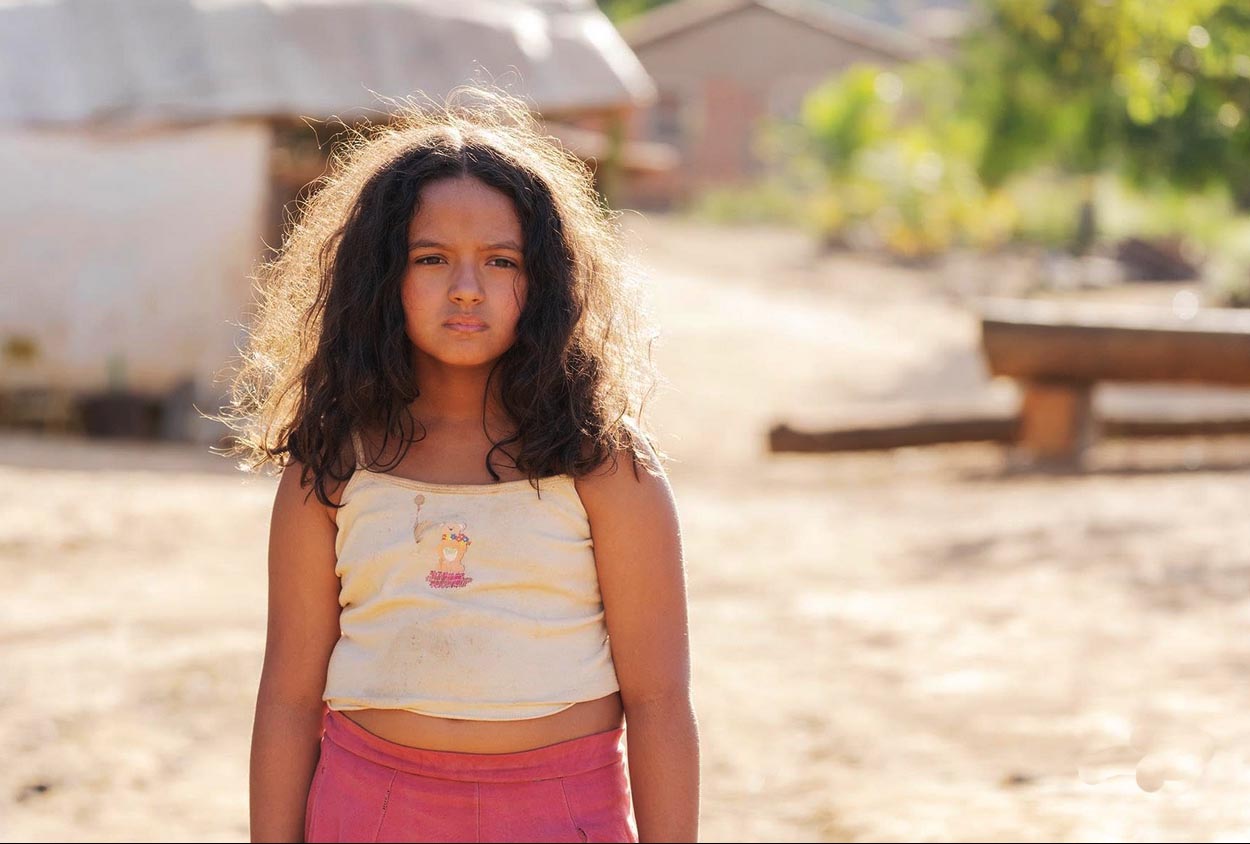
Lavinia Castelari as Kaylane
Although the sertão is normally considered the real wilderness and outback of Brazil, Minas Gerais comes a close second. Therein lie the rich resources of the country to be developed and exploited, as listed on the Brazilian flag: Ordem y Progresso- (Order and Progress) but at what cost?
The mining company is the angel of death, but can you kill those who are already dead? Pimental immerses the audience into the endless misery of life in these isolated mining camps where the housing provided for their workers is inadequate and even the smallest pay rises are refused. The whole village is entirely reliant on the mining company for survival. Health & safety is unknown and accidents are commonplace.
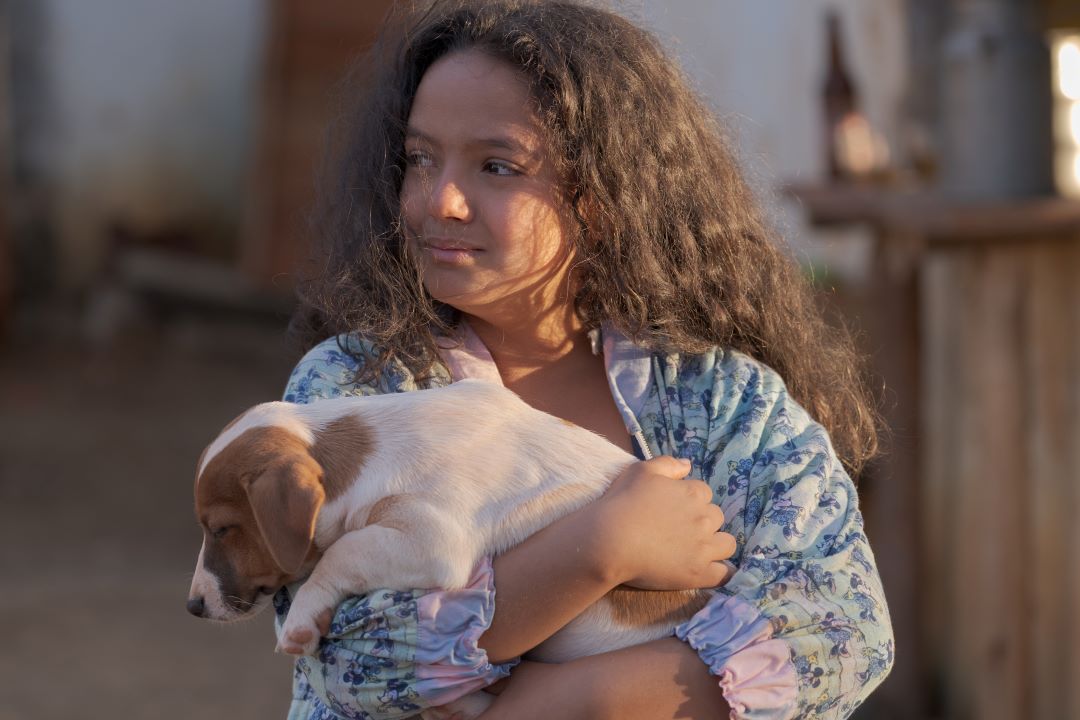
The Silence of the Oysters is shot from the point of view of Kaylane ( as a child played by the magical Lavinia Castelari). Her passion is to collect insects, even many that are already dead from the toxic chemicals in the earth. She follows her mother around, teased by her brothers.
“Why do we dream?” She asks her mother. “It happens sometimes.”
Her mother Cleude (Sinara Teles) certainly has dreams of her own. Kaylane is a quiet observant child, considered odd as she barely utters a word. But, she susses what is going on, aware of how her mother has to provide ‘special services’ for the Portuguese storekeeper to get enough food and cigarettes for her husband and family of 4 sons and a daughter. Dreaming of a different life, one day Cleude vanishes for real. Did she drown in the toxic quarry waters?
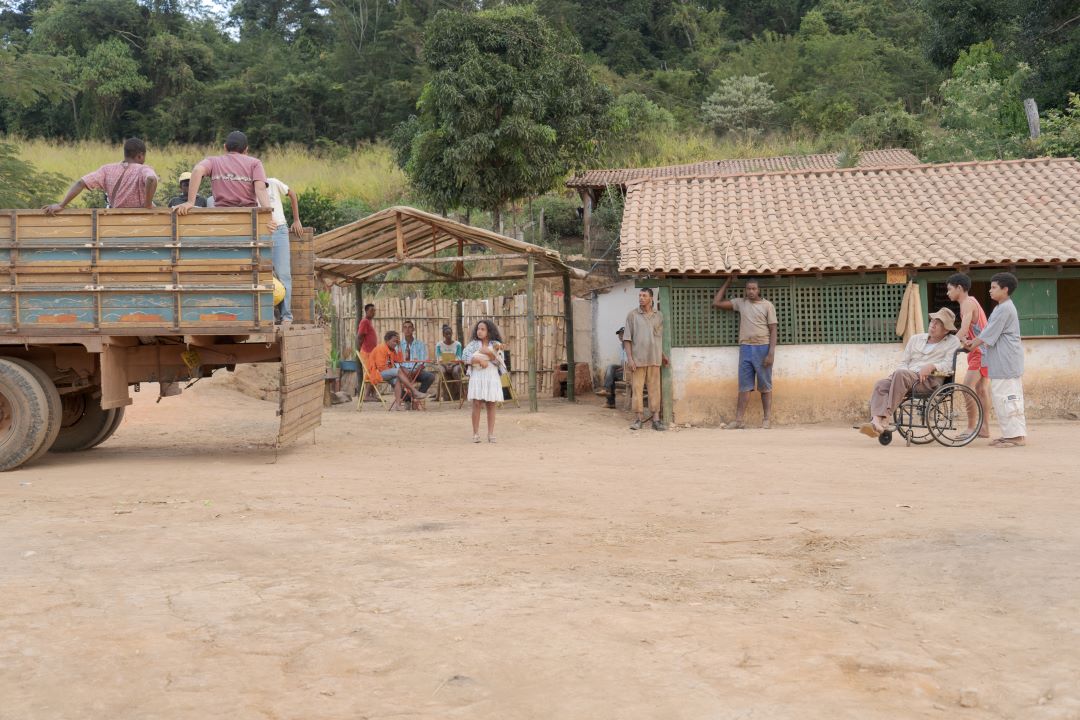
The children struggle to manage while their frail father tries, but eventually dies. Then the boys start leaving the village in search of better horizons. Two, then another, all promising to return and send money- none of which materializes, until finally Kaylane, now a young woman, finds herself alone with only one brother, Kaique.

Bárbara Colen as Kaylane adult
When Kaique realizes that Kaylane’s stories about the Portuguese shop keeper’s abuse of their mother was real, he shoots him dead in a rage, and is also taken away, leaving Kaylane alone with only her dogs for company. Only now, with everyone gone, she is also in danger of losing her home. How can she manage? This is total deliberate exploitation- they can so they do.
This film becomes a stark critique of the dark face of capitalism, the uncaring aspects of exploitation taken to an inimitable level. The activities of two mining companies, inspired this film. They are Vale and Samarco.
The one moment of light relief is the visiting, somewhat tacky, travelling circus that lands in town every so often, to huge excitement. Their simple antics are repeated time and time again to the delight of the villagers, so desperately bored of watching their small black & white TV programmes. The clumsy clowns and singers in their colourful sequined attire become heroes for the locals, many of whom cannot afford to the tickets and have to watch the shows through the cracks in the awnings.
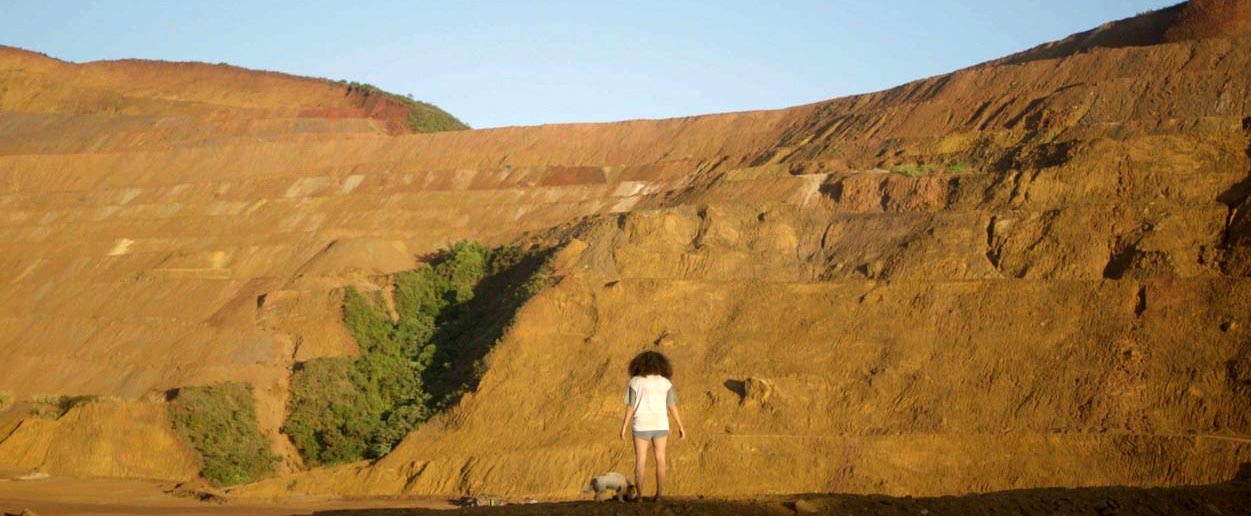
In the end, the village is a prison where they are held as if incarcerated, as everything deteriorates around them. The mountains are gradually and systematically destroyed into fragments and shipped out leaving the vast open cast quarries of red polluted earth.
Petrus Cariry’s photography is stunning with powerful long takes of the mountain landscapes with the massive dark rocks that forms sharp crevasses and loose soil, as they disintegrate. The horror becomes beautiful in a chilling way- the erosion of the land is echoed in the erosion in the people, their lives and souls- those who dared, have fled.
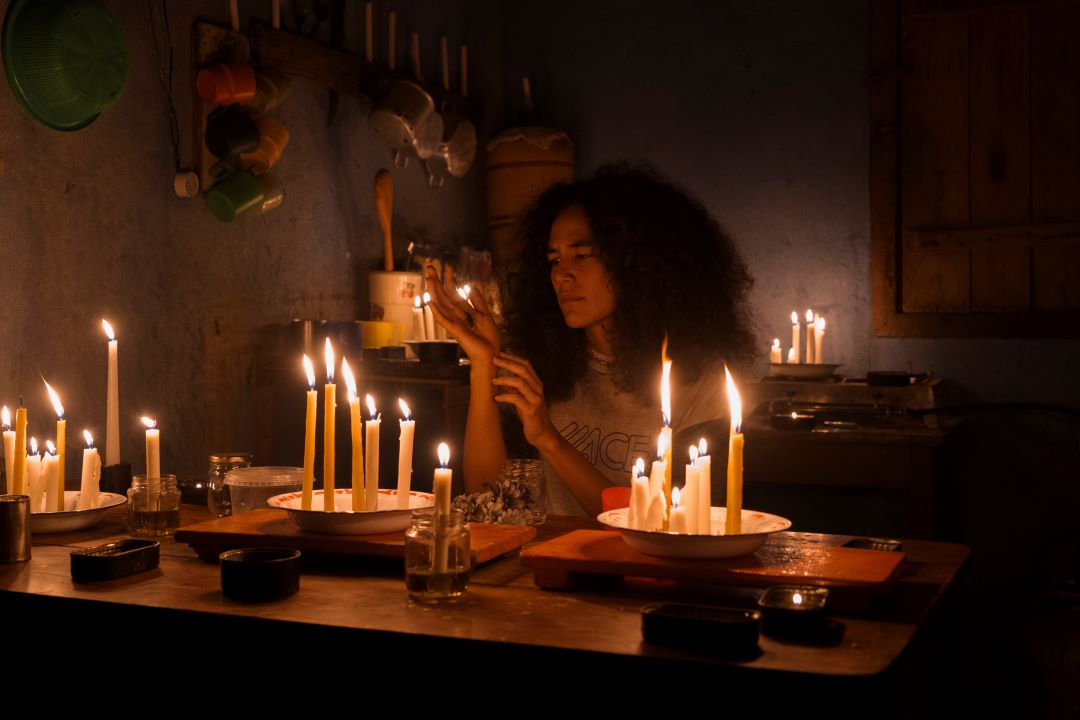
Bárbara Colen as Kaylane
There is some play between the young and older Kaylene as her hopes for a family life dies little by little, as her family leaves or dies. She surrounds herself with dogs that form a distinctive sub-plot all the way through with much charm. So much so, that they merited the credits that Pimental gives them at the end.
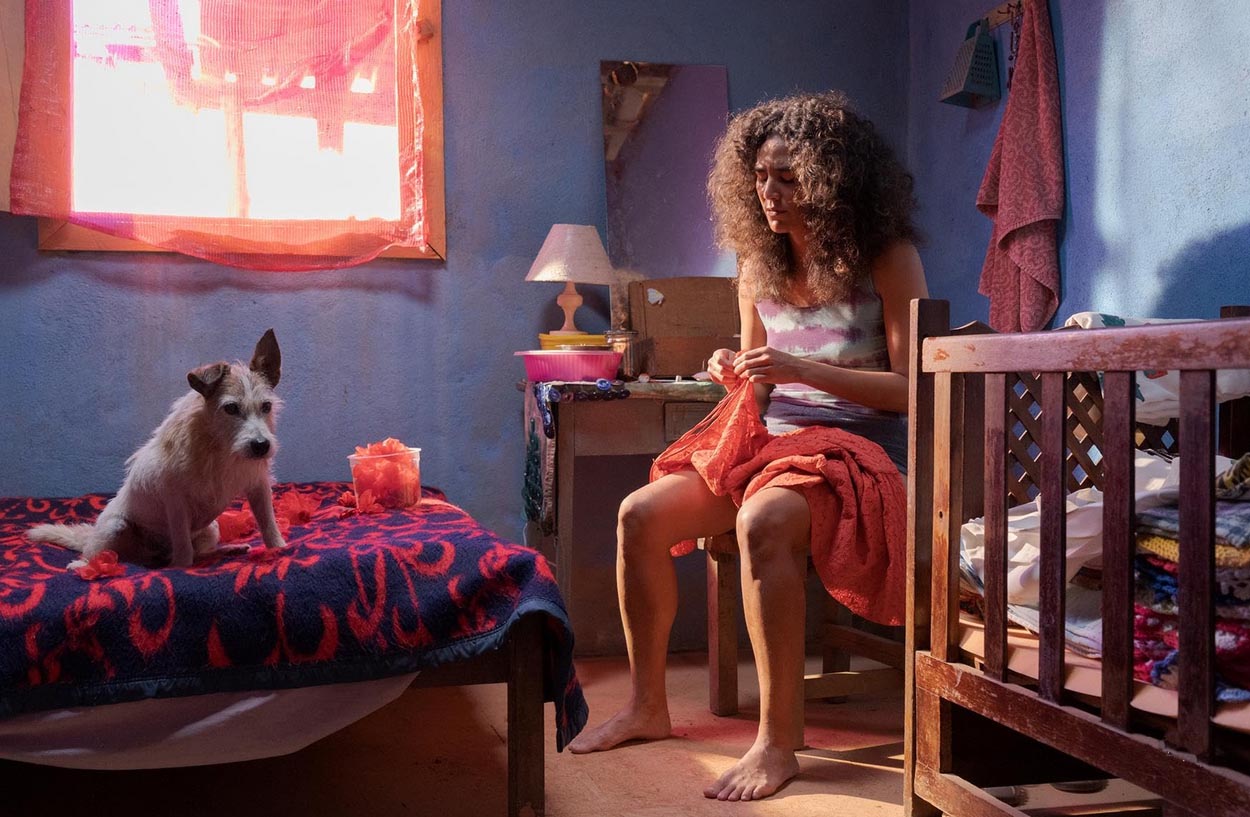
Bárbara Colen as Kaylane
With all her family gone, Kaylane fills her empty house with tin & fabric flowers and covers her walls with her collection of weird and wonderful beetles and bugs, even carefully framing the emotive portraits of Jesus and Mary with her blossoms in an attempt to make it feel alive again. But the chasm of her missing family opens like a sink hole as the smell of death and skeletons permeates every wall.
Kaylane as an adult is played by the charismatic Bárbara Colen. Beaten down by the misery of her life, after her family has all has disappeared, she can see no hope for her existence while some villagers vainly dream about planting coffee again.
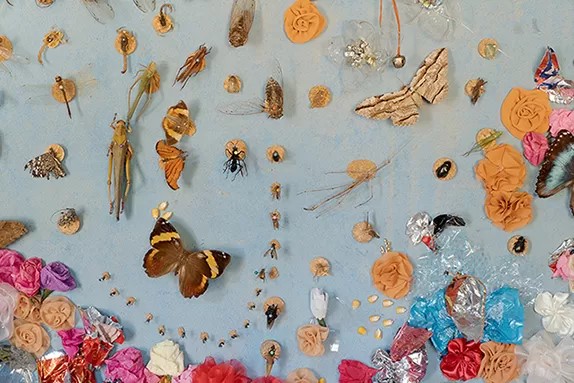
As the ore gradually depletes, the village becomes almost like a ghost town. There are chilling images of the eroding effects of the heavy rains on the torn slopes of the mine as the water breaks them down. The ensuing sludge accelerates like a slug towards the toxic lake and dam. When the rains lead to the total collapse of the badly-maintained dam, the polluted mud carries half a mountain down with it, devastating all life below and poisoning the rivers. Even the sea turns red, as if with the blood of the victims, the people and the livestock that were swept away without warning.
A solo voice sings over the devastation –
Director Marcos Pimental was born in 1977 in Minas Gerais. After taking film studies at the EICTV Cine and TV school in Cuba he started out as a documentary film maker. The Silence of the Oysters is fiction but it echoes themes that he touched on in his debut creative documentary, Breath (2013). There, he also examines human existence in the isolation of a small village in the middle of nowhere, where all they have is the wind, the dust, the mountains and the silence of time.

Director Marcos Pimental
The director’s feel for pace & tempo that allows the viewer to be immersed in the harsh reality of the endlessly empty lives of the characters, is very powerful. However, he has fallen into the danger of being unable to edit the first part of the film to a manageable length. As it stands, by the time disaster strikes, we welcome the relief of some action, despite the horrendous devastation that it brings with it.
Developing the post-apocalyptic chapter where Kaylane is protected by a local indigenous tribe (the Xukuru- Kariri) was good, lifting the mood into some form of respite with the awakening of a determination to be resilient and survive against all odds.
The real -life disasters upon which this story is based took place in Minas Gerais, when the dam in Fundão Bento Rodrígues burst in 2015 and later, the Dam of Córrego do Feijão in Brumadinho, also failed in 2019. Some archival footage of these was used in this film.
We are informed that over 289 people died drowned in the mud flows and some bodies were never recovered at all. Despite these two dam collapses being the greatest environmental disasters in Brazilian History, it is spine-chillingly significant that no one has been held to account for these crimes. More worrying still, is that over 300 mines are still active, with equally little scrutiny in the area.
Despite being too long, (it could have been a good 40 minutes shorter), the young and the older Kaylane both hold the film together with their mesmerizing performances, coupled with the beautiful cinematography. There is much poetry in motion here.
The Silence of the Oysters won the Audience Award at the Molodist Kyiv International Film Festival, and it likely to continue to do well.
WRITER/DIRECTOR: Marcos Pimental
Producers: Luana Melgaço & Marcos Pimental /Exec prod: Fernanda Vidigal/ Luana Melgaço/ Production director: Clara Bastos / DOP: Petrus Cariry / Direct Sound: Camila Machado/ Sound Designer: Vitor Coroa / Art Director: Juliana Lobo / Editor: Ivan Morales Jr. / Production company: Tempero Films
CAST: Kaylane child: Lavinia Castelari / Kaylane Adult: Bárbara Colen / Kaíque: Lucas Oranmian/ Mother Cleunde: Sinara Teles /Portuguese shop keeper: Carlos Morelli /Cacique (Chief) Carlinhos: Arapowãnã Xukuru Kariri


